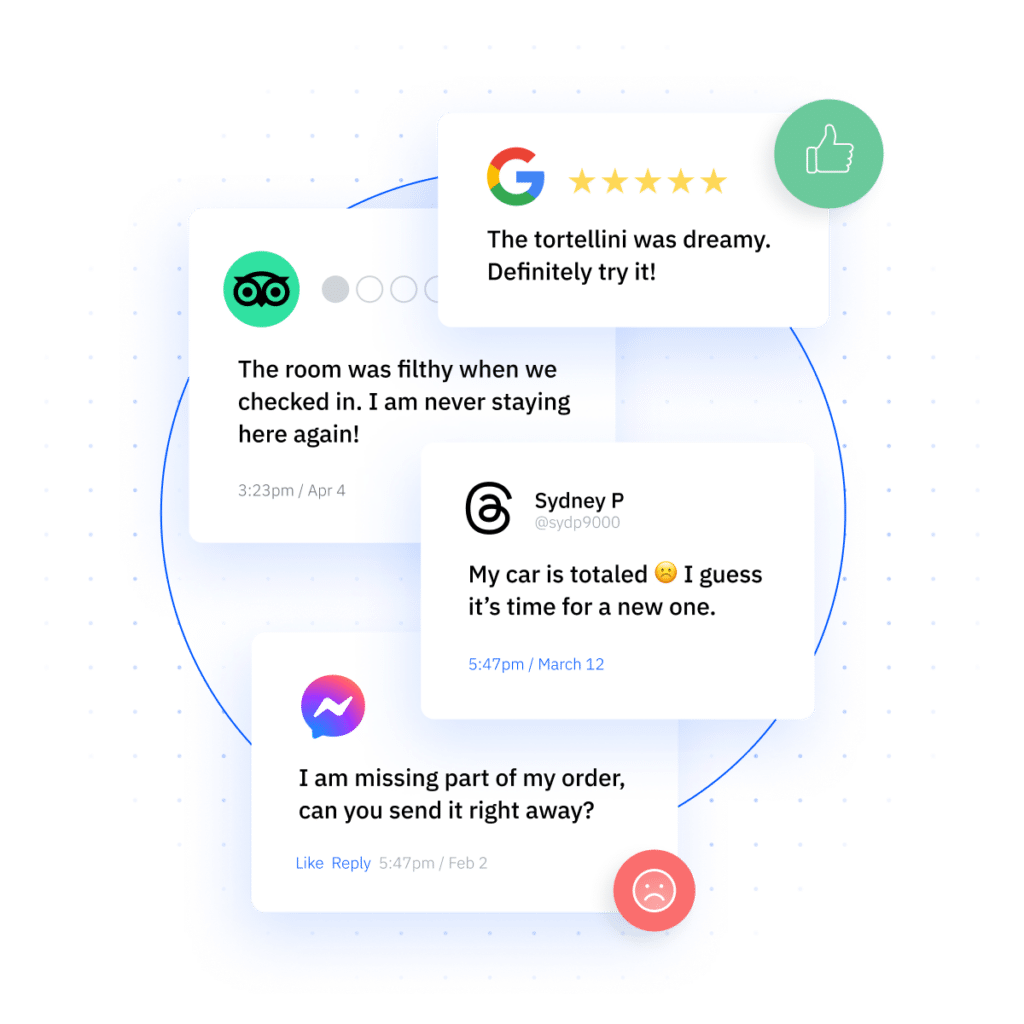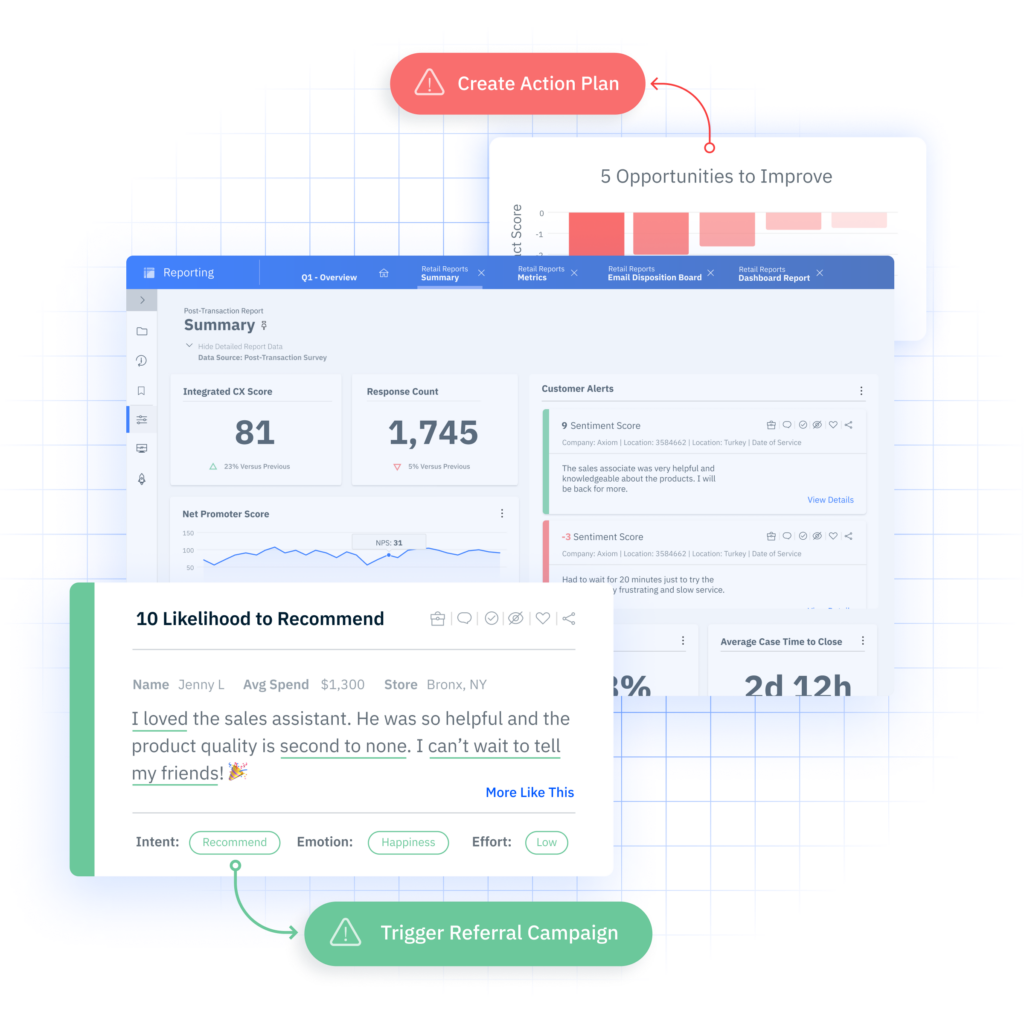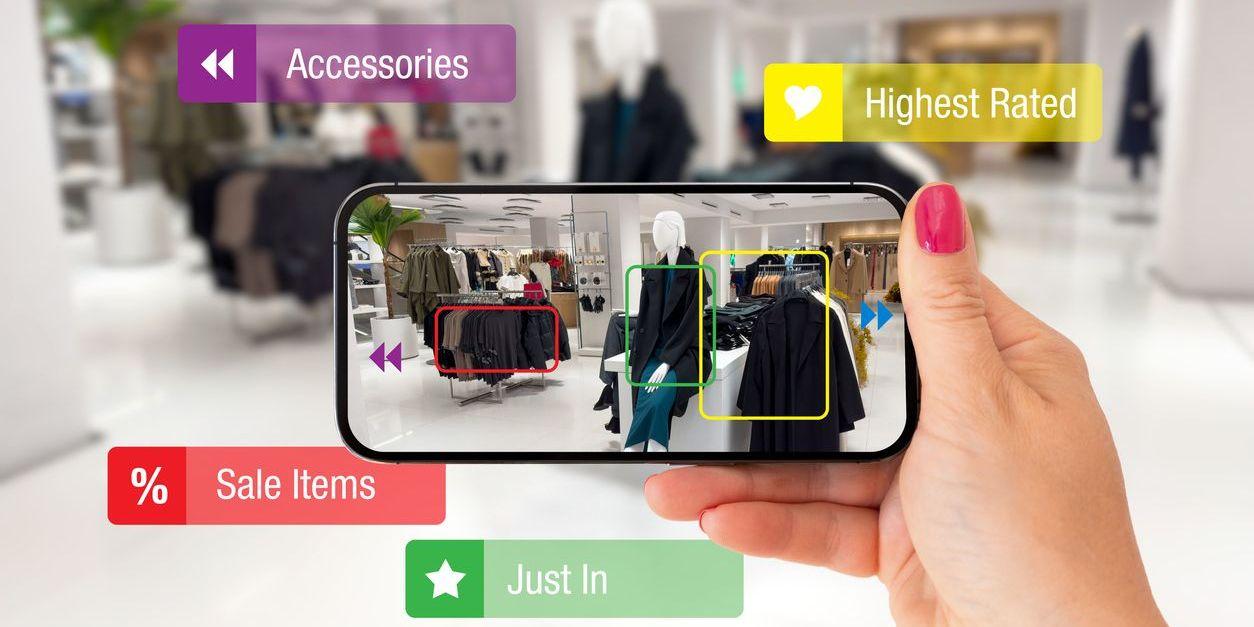
So many businesses today are focused on getting feedback for the sake of getting feedback. They want 5-star reviews and soaring metrics. But, most businesses fail to act on a lot of the feedback they receive. In order to create a truly great customer experience, you need to implement a customer feedback loop that will integrate your customers into the business.
What is a Feedback Loop?
A feedback loop, specifically the customer feedback loop, is defined as the process companies use to gather customer feedback and then respond to it by improving some aspect of the business or product. It is a loop because as the company makes improvements, the customers weigh in with feedback on how the improvements are faring. The company then adjusts the improvements to fit the voice of the customer. It is a constant loop of feedback and improvements. There are also two subcategories of feedback loops: a positive feedback loop and a negative feedback loop.
Positive Feedback Loop
The positive feedback loop is just as it sounds. Customers provide positive feedback to a company, and then the company makes note of what they are doing well so that they can continue to do those things in the future.
Consider a credit union that deploys a new 24/7 chat function to their mobile app and website. This app responds to customer concerns at all hours of the day, and provides prompt and accurate resolutions to their problems. When the interaction is over and the credit union deploys a customer satisfaction survey, the customer will answer that they were satisfied with their experience. The credit union will make note of this and make sure that future products meet the benchmark set by the successful chat function.
Negative Feedback Loop
On the other hand, a negative feedback loop is when customers provide negative feedback about their specific pain points with a product or service. An organization can act on these insights by fixing the existing product or service, and then making sure similar issues don’t appear in the future.
As an example, let’s imagine the same financial services firm from earlier experiences a prolonged period of poor customer service due to understaffing or inadequate training. As a result, some customers decide to send in complaints and may even switch to competing financial institutions that offer better customer support experiences.
To alleviate this issue, the financial services firm invests in better employee onboarding and continuous employee development.
How Does A Feedback Loop Work?
A communication feedback loop works by customers communicating with a business, the business analyzing the feedback, and then acting on it. This can be thought of as a continuous cycle and relationship between the customer and business, but can also be thought of as a repeating list. Here is a quick breakdown of how the feedback loop works:
- Customer Interaction: The feedback loop starts with a customer interacting with a product, service, or brand. This interaction could be through purchases, support inquiries, google reviews, or any other form of engagement.
- Feedback Generation: Following the interaction, the customer forms an opinion or experience based on their interaction. This could be positive, negative, or neutral feedback about their experience.
- Feedback Collection: The feedback is then collected by the company through various channels such as surveys, reviews, social media, customer service interactions, and more.
- Analysis and Action: The collected feedback is analyzed by the company to identify patterns, trends, and areas for improvement. Based on this analysis, actions are taken to address any issues, capitalize on strengths, or make enhancements to the product, service, or customer experience.
- Implementation: Changes or improvements resulting from the analysis are implemented in the product, service, or customer experience. This could involve refining processes, updating features, enhancing customer service training, or any other actions aimed at improving the overall customer experience.
- Customer Response: Customers interact with the updated product, service, or experience, and their responses are observed. If the changes positively impact the customer experience, it reinforces positive behavior, loyalty, and satisfaction. If the changes do not have the desired effect or worsen the experience, adjustments may be necessary.
- Repeat: The feedback loop is an ongoing, iterative process. As customers continue to interact with the product, service, or brand, their feedback informs further improvements and adjustments, creating a continuous cycle of enhancement and refinement.
Why Are Customer Feedback Loops Important?
Customer feedback loops are an integral part of creating an integrated customer experience. Some of the most important data from your customers is qualitative, not quantitative. You need to have a way to hear that qualitative feedback, make sense of it, and act on it in order to create experiences your customers will continue to enjoy.
When businesses actively seek and act on customer feedback, it builds trust and strengthens the relationship between the company and its customers. Customers appreciate when their feedback is acknowledged and acted upon, leading to increased loyalty and advocacy.
Ultimately, customer feedback loops can drive revenue growth by improving customer satisfaction, loyalty, and retention. Satisfied customers are more likely to make repeat purchases, refer others to the business, and positively impact the company’s bottom line.
Customer Feedback Loop Examples
Customer feedback loops can take various forms across different industries and businesses. At the end of the day, the best customer feedback loop is the one that works best for your business. The key is to choose the methods that align with the business’s goals, target audience, and resources. Here are some examples of different ways to kickstart a customer feedback loop:
Customer Surveys
Sending out a survey to customers after a purchase, service interaction, or event is a common client loop example. Surveys can gather feedback on various aspects of the customer experience, such as product satisfaction, service quality, and overall brand perception.
Online Reviews and Ratings
Encouraging customers to leave reviews and ratings on platforms like Google, Yelp, or TripAdvisor provides valuable feedback for businesses. Monitoring these reviews is as just as important as knowing how to respond to reviews as it allows businesses to address concerns, thank satisfied customers, and improve their online reputation.
Social Media Monitoring
Understanding the importance of social media marketing is another way to implement a successful feedback loop. Monitoring social media channels for mentions, comments, and direct messages provides real-time feedback on customer sentiment and experiences. Engaging with customers on social media allows businesses to address issues promptly and build relationships with their audience.
Customer Service Interactions
Customer service interactions via phone, email, chat, or in-person provide direct feedback on customer experiences. Recording and analyzing customer service interactions help businesses identify recurring issues, training needs, and opportunities for improvement.
Product Usage Data
Analyzing product usage data, such as website analytics, app usage metrics, and product telemetry, provides insights into how customers interact with products and services. Understanding user behavior through a user feedback loop helps businesses identify usability issues, feature preferences, and areas for optimization.
Feedback Forms and Comment Boxes
Placing feedback forms or comment boxes in physical locations or on digital platforms allows customers to provide feedback conveniently. This can be particularly useful in retail stores, restaurants, hotels, and other service-oriented businesses.
Focus Groups and User Testing
Conducting focus groups or user testing sessions allows businesses to gather qualitative feedback from customers in a controlled environment. Observing how customers interact with prototypes or new features provides valuable insights into usability and functionality.
Net Promoter Score (NPS) Surveys
Net Promoter Score surveys measure customer loyalty and likelihood to recommend a product or service to others. By asking a single question (“How likely are you to recommend us to a friend or colleague?”), businesses can gauge overall customer satisfaction and identify promoters, detractors, and opportunities for improvement.
Customer Feedback Loop Best Practices
When collecting customer feedback, there are certain practices you want to follow to make sure you are getting accurate feedback that can be utilized. The most important practice to follow is to define clear objectives for collecting customer feedback. Determine what specific insights you want to gain and how you plan to use the feedback to improve the customer experience.
Once you put goals into place and move on to actually collecting feedback, it is important to utilize multiple channels. Building an omnichannel customer experience will help you collect feedback from multiple sources that are viewable in one central location. This is so vital because your customers interact with your business in different ways, and you need to be able to communicate with them effectively regardless of the channel they are on.
Lastly, treat feedback collection and analysis as an ongoing process rather than a one-time effort. Continuously seek feedback, iterate on improvements, and measure the impact of changes on the customer experience. Remember that the customer feedback loop is a loop, not a line. By continuously working to understand and act on your customer’s feedback, you will improve your own customer’s view of your business and the consumer view of your business in comparison to your competitors.
How Feedback Loops Impact the Customer Experience
Feedback loops have a significant impact on the customer experience in several ways. The customers are the most important part of any business, so prioritizing their feedback makes them feel valued. Engaging customers in feedback loops fosters a sense of ownership and involvement in the brand. This will lead to increased customer experience metrics such as Net Promoter Score, Customer Satisfaction Score, and Customer Effort Score.
Along with increased metrics, feedback loops help businesses identify issues and pain points in the customer service process or in their products and services. These insights help businesses identify problems that they were not aware of before. Addressing these issues from customer feedback helps the business see them before they have shown up through other channels such as churn metrics, customer exit interviews, or more. Feedback loops improve the customer experience by improving business processes.
Start a Customer Feedback Loop with Pearl-Plaza
In order to effectively utilize feedback loops, you need the right solution. Pearl-Plaza’s XI Platform offers a robust suite of features designed to empower businesses to understand and improve the customer experience at every touchpoint. Learn more about our customer experience platform to see how we can improve your customer feedback processes today!
























